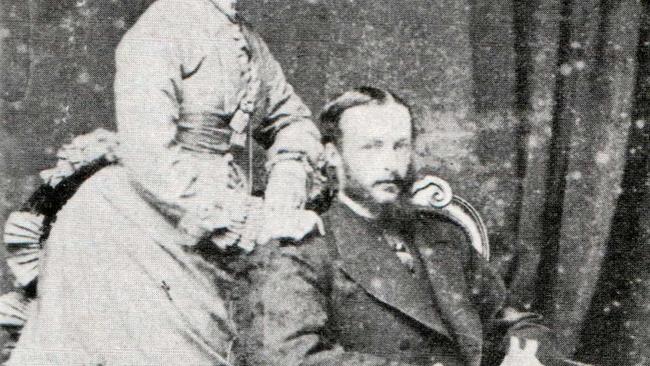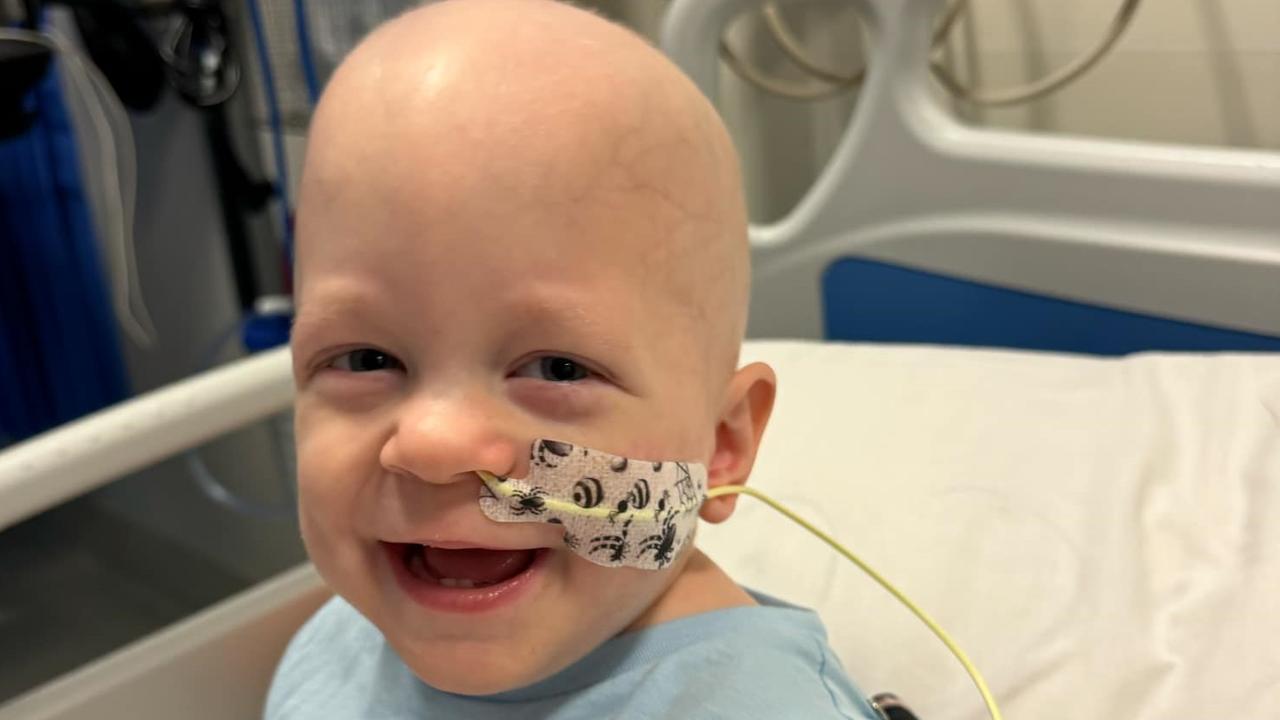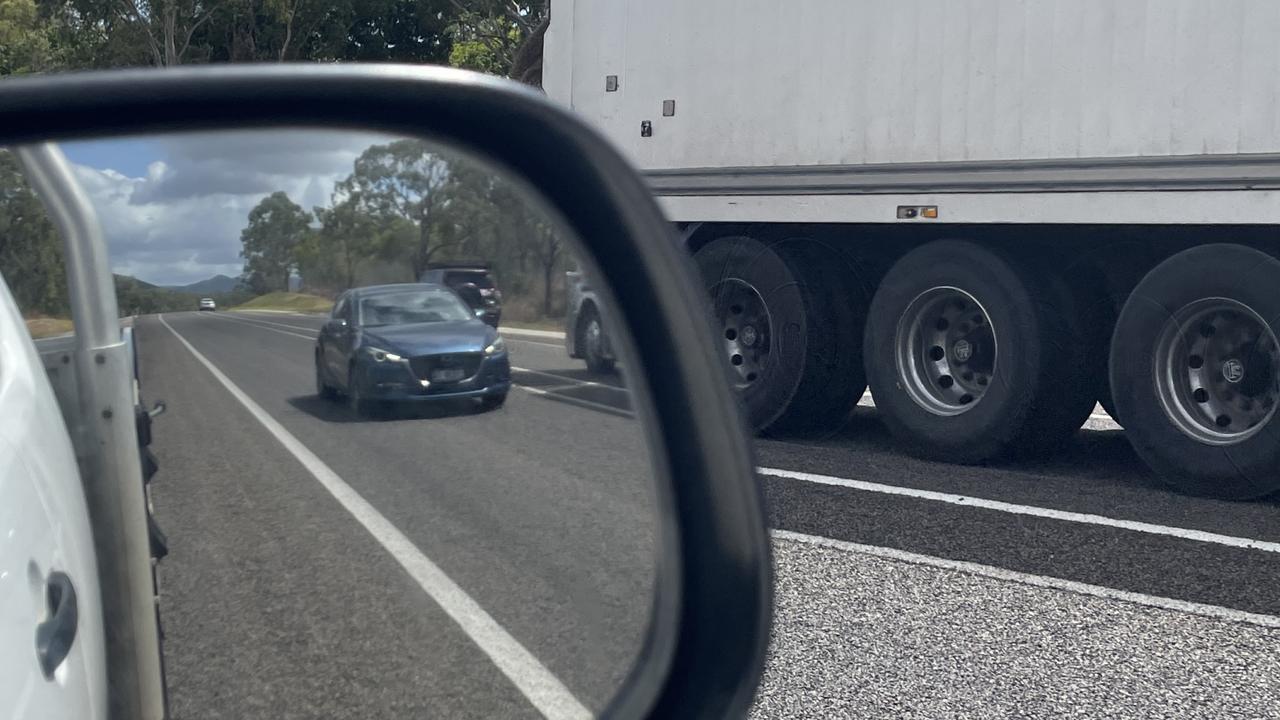Rawson family's key role in new settlement
Edmund Rawson's involvement in the Mackay and Pioneer Valley community was widespread

Mackay
Don't miss out on the headlines from Mackay. Followed categories will be added to My News.
IN AUGUST 1875, with flags fluttering and guns firing, the Tinonee sailed gaily up the Pioneer River and was brought to the wharf in first-class style by Captain Hirst.
A large and enthusiastic crowd of friends rushed to welcome Edmund Stansfeld Rawson and his bride of three months, Decima. Edmund had been absent from Mackay for 18 months.

Born in England in 1845, Edmund Rawson had been a student at Cambridge University before coming to Australia. He and his two older brothers, Charles and Lancelot, were on Tenningering Station in the Burnett region prior to their move to Mackay.
In 1867, Charles and Edmund took up the lease in the Pioneer Valley of Abington Run, which included the area called Shamrock Vale. They named their whole area The Hollow where they ran cattle.
Both became involved in community activities. Edmund played cricket and was instrumental, with his brother, Charles, in the formation of Mackay Turf Club. Both brothers served as stewards at the races and Edmund remained involved with the club for the rest of his time in Mackay.
He was on the committee for the formation of an Athletic Club in 1868.
Edmund became involved in politics in Mackay in 1868 when he attended a meeting held to consider the current state of affairs in Northern Queensland and to pass resolutions for its better government. This was an early move for Separation for North Queensland and Edmund became an enthusiastic supporter of the cause.
In 1871, the Rawson Brothers bought a block of land opposite the hospital and set up a slaughter yard and built a house. They called this property The Hermitage.
In 1873, Edmund became involved with the Mackay District Hospital and served on the house, building and general purposes committees.
Edmund went into partnership with Robert Martin (of Hamilton and Mandarana runs) and they carried on business as wholesale butchers, employing Mr J.C. Binney as manager. They supplied meat at wholesale price to the hospital.
On February 12, 1873, Messrs E.S. Rawson, G. Smith and J. Armitage were elected to the vacant seats in the Municipal Council. Ninety-three votes were recorded, four of which were informal.
While on the council, Edmund, along with Aldermen Jeremiah Armitage and David Hay Dalrymple, publicly opposed the proposed site for a bridge over the Pioneer River at the foot of Sydney Street, which they felt would adversely affect the wharfage facilities in that section of the river. They supported the construction of a bridge at the Hospital crossing.
Edmund's horse, Richelieu ran in the Members' Cup at the 1873 Mackay Turf Club Annual Races and came third. Edmund's racing colours were a black jacket, scarlet sleeves and black cap.
On November 24, 1873, the partnership of Martin and Rawson was dissolved. On November 25 the partnership of Meynell and Rawson was formed when Edmund went into business with Francis Meynell as wholesale butchers at The Hermitage.
Edmund resigned from the Municipal Council and returned to England in early 1874. In his absence, Charles raced Richelieu in the Mackay Turf Club races.
Meynell and Rawson successfully bid for a three-year lease of the racecourse paddock, and purchased the butchery owned by Mr A. Wagner at the corner of Sydney and Victoria streets. Hides, tallow, sheepskins and bones were sold through The Hermitage. Meynell and Rawson sold beef to the Mackay Hospital.
Francis Meynell fenced The Hermitage and his thoroughbred stallion, The Arrow, stood at stud there.
When Edmund and Decima arrived in Mackay in 1875, they set up house in The Nyth a little upstream along the Pioneer River from The Hollow homestead where Charles and Decima's elder sister, Winifred lived. The two families established beautiful gardens around their homes, which were in the area that is now the town of Mirani.
On September 4, 1876, Decima and Edmund welcomed their first daughter, Beatrice Octavia, born at The Nyth.

Edmund was involved with the Amateur Dramatic Society, Mackay Agricultural, Pastoral and Mining Association, Mackay District Association and the School of Arts. He was also appointed third trustee for the Holy Trinity Church of England in Mackay, and was re-elected nominator for a period of three years.,
In 1877 the Rawson Brothers had the thoroughbred horse Roebuck at stud.
In 1879, Edmund was involved in the purchase of the Queensland Meat Preserving Company Limited, which had a capital of £200,000 ($400 000) in 20,000 shares of £10 ($20) each.
He was one of a committee appointed to canvass the area for shares to be taken up. By September that year, 400 shares had been taken up in Mackay and 700 in Rockhampton.
On October 15, 1879, Edmund and Decima's second daughter, Sybil Stansfeld, was born at The Nyth.
On February 25, 1880, the executive council appointed Messrs Dyson Lacy, D.H. Dalrymple and E.S. Rawson, members for No. 3 Subdivision, of Pioneer Division. The Divisional Board met for the first time on March 30. Edmund promised he would furnish a design for the Board Stamp at the next meeting. At the April meeting, his design was adopted.
On April 6, 1880, in the Mackay District Court, before His Honour Judge Hely, Mr E.S. Rawson was sworn in as a Magistrate of Territory. Edmund was on the bench of the Mackay Police Court as a Justice of the Peace on April 14.
In June 1880, E.S. Rawson & Co commenced business in Brisbane Street as Planters, Squatters and General Commission Agents, Shipping and Custom Agents and were agents for The Mutual Assurance Society of Victoria. Mr Charles H. Morgan was a valued employee.
By October the firm was listing stations, livestock and freehold property for sale. They were also appointed agents for Rockhampton Ale from the Fitzroy brewery.
Messrs E.S. and C.C. Rawson, E.M. Long, D.H. Dalrymple and F.N. Meynell donated the cost of a new stained glass window for the chancel of the Holy Trinity Church in Mackay.
In June, 1881, the schooner Adelaide left South Australia with a cargo of 200 tons (181 tonnes) of flour and 24 cases of jams consigned to E.S. Rawson & Co. She hit heavy seas and was obliged to put in to Sydney for a partial refit. The remainder of the journey, which lasted a little over three weeks, was also marked by stormy weather.
Edmund Rawson retired from the Pioneer Divisional Board at its meeting on January 5, 1882. He had been an alderman on the Municipal Council in 1881, and on February 11, 1882, was nominated as Mayor of Mackay by the other aldermen for 12 months.
Edmund Rawson's story will continue.
The Pioneer Valley Museum remains closed while the displays are restored after the recent water damage. Please check the Mackay Regional Council website for when the Museum will re-open. Working bees continue on Wednesdays. Phone 4961 9229
Originally published as Rawson family's key role in new settlement


